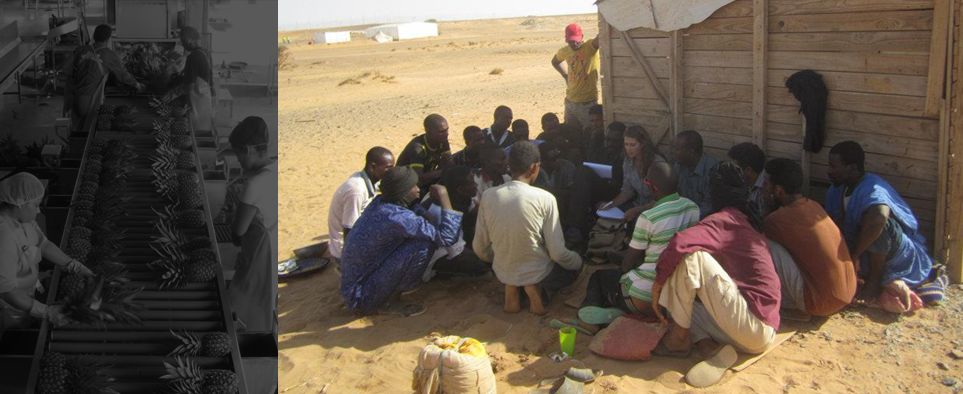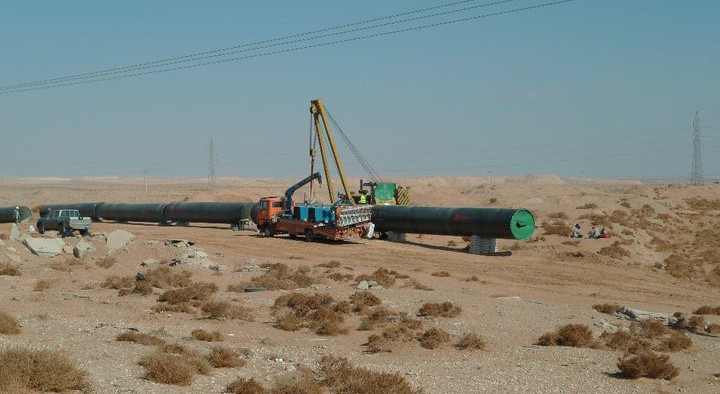The Disi Project is a water conveyance pipeline pumping water from an ancient aquifer near the Saudi border to Jordan. The water has been encased in stone for 300,000 years, tapped periodically through the centuries by farmers and nomads — and attacked by Alexander the Great in campaigns against Persia, when Jordan was, I think, Assyria.
Initially we thought this was a great project. Major international development banks are supporting massive multinational companies (GE out of the US and GAMA out of Turkey) to help supply water to a desiccated Amman, where residents receive water one day each week. As one engineer from the Amman water distribution company described it, “We have no demand, we have only supply.” No one even knows how much water Jordanians would need – right now they get about 105 cubic meters per person per year (in the 2003, the average American, used 1,834 cubic meters per year) — it simply doesn’t matter what “demand” is, since there’s not enough to go around. Disi promises to increase water access for residents while reducing pressure on other aquifers in the country – aquifers that are depleting so fast Jordan will be functionally out of water in a decade.
The urgency of the water situation is palpable. The newspapers report regularly on water shortages; Disi is in headlines constantly, and everyone seems convinced the water will be given to them – farmers, residents, refugees. (Not quite everyone, actually. Installing pipelines running through the tribal town of Ma’an, workers report being threatened with violence and hearing bullets ricochet off of the pipe sections, as locals try to derail the project, feeling they’re not deriving benefits. So says the Jordan Times, anyway)
People in the ministries, the companies, and the press all happily announce that Jordanians will benefit from Disi, but no logistics or documentation is forthcoming. Secrecy enshrouds the contract, water monitoring data, even the size of the aquifer itself (Government officials say it has water to supply Jordanians for “a few centuries.” In 1997, Halliburton said it had 50 years max).
The secrecy is troubling, not just because this is a matter of water – the most vital and limited resource in the country – but because it leaves so many problems unsolved. There’s no publicly known treaty governing the use of Disi water between Saudi Arabia. There’s no agreement on how much water should cost residents (though there’s unanimous agreement that it costs a LOT, even just in energy costs, to pump water 325 kilometers to Amman). There’s no agreement on who will get the water, and as of now rich, politically-connected farmers benefit from pumping rights illegally tap aquifers (note: the farmers tapping Disi are doing it legally — they have 25-year contracts that expire this summer. Up north, illegal tapping is common) and pay nothing for water they use to grow bananas for export. It is a subtle form of vice, “stealing” scarce water to make profits abroad.
The Disi project raises a thousand questions and plenty of new human rights issues. It’s going to be an impact assessment unlike any we’ve done.

Author: Kendyl Salcito, executive director, NomoGaia
Kendyl Salcito developed her expertise in human rights and business as a foreign reporter in Southeast Asia and North America. She has advised industry groups on corporate human rights performance and contributed to the development of the UN’s Guidance Principles for Human Rights and Business.


